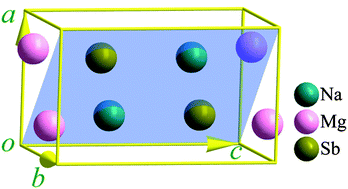Predicting high thermoelectric performance of ABX ternary compounds NaMgX (X = P, Sb, As) with weak electron–phonon coupling and strong bonding anharmonicity†
Abstract
The ABX ternary compounds have a variety of attractive physical properties. For example, some of the half-Heusler compounds as a class of ABX compounds exhibit high thermal power factors and thus promising thermoelectric performances. This motivates a search for potential thermoelectric candidates from the ABX compound family different from the half-Heusler structures. In this study, we investigate the electronic and phononic structures of tetragonal NaMgX (X = P, Sb, As) compounds, which belong to the ABX family using first-principles calculations based on density functional theory and density functional perturbation theory. The whole set of thermoelectric properties are thus evaluated from the semi-classical Boltzmann transport calculations. It is revealed that weak electron–phonon coupling and strong bonding anharmonicity are the critical physical ingredients for promising thermoelectric performance, giving rise to the optimized figure of merit factor ZT of up to 1.38, 2.39, and 3.54 for NaMgX (X = P, Sb, As) compounds in the intermediate temperature range.


 Please wait while we load your content...
Please wait while we load your content...